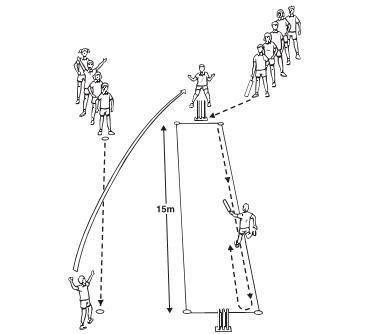Introduction
Welcome to our comprehensive guide on how to enhance your cricket running between the wickets. Running between the wickets is a crucial aspect of cricket that often makes the difference between victory and defeat. Whether you’re a beginner looking to grasp the basics or an experienced player aiming to fine-tune your skills, this blog post is designed to provide valuable insights and tips to help you become a better runner on the
Understanding the Importance of Running Between the Wickets
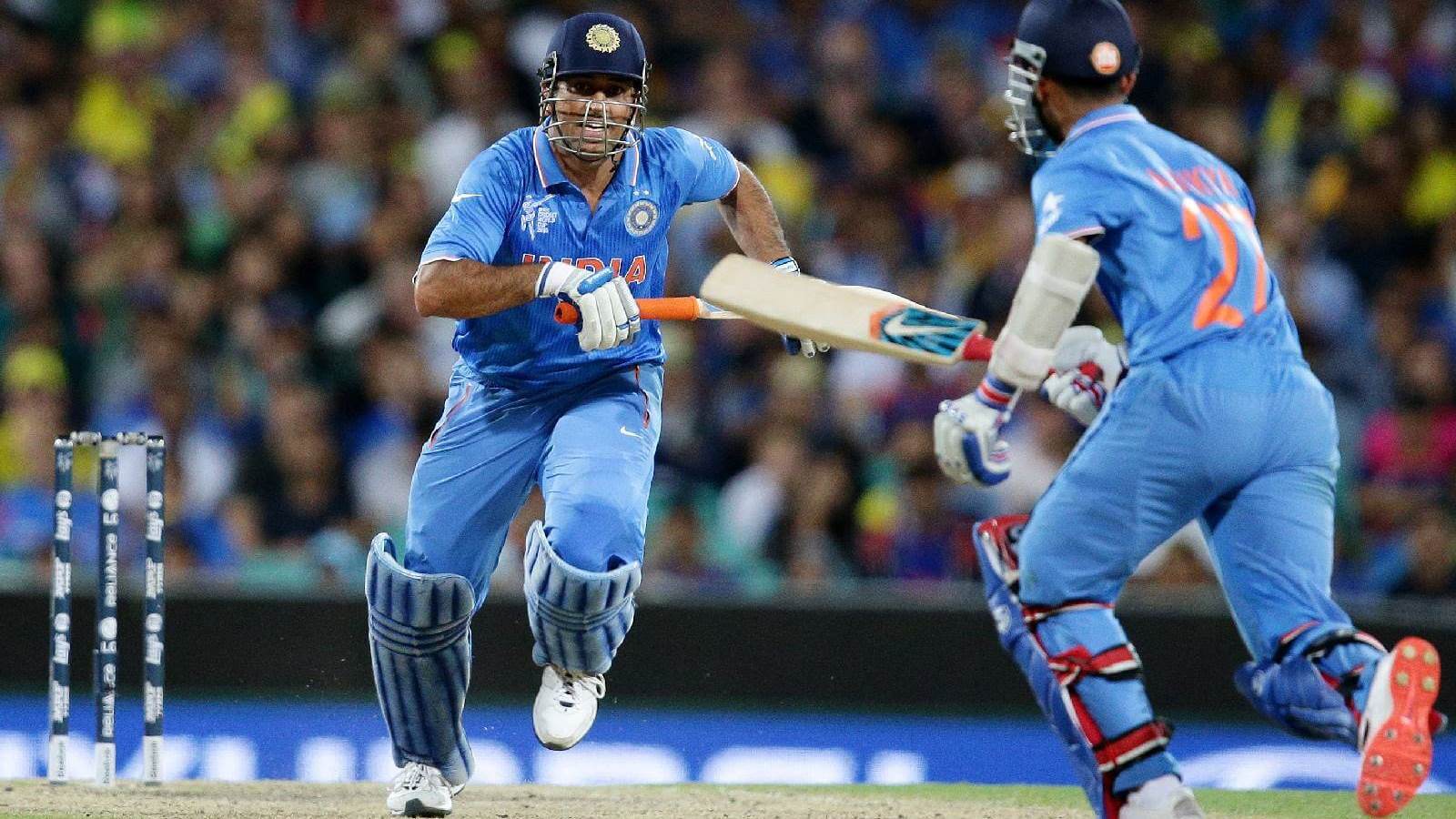
Running between the wickets is often underestimated in cricket, but it plays a pivotal role in determining a team’s success. The ability to convert singles into twos, judge quick singles, and minimize run-out chances can significantly impact the outcome of a match. Let’s delve into the key reasons why running between the wickets is so crucial:
1. Accumulating Runs
In cricket, every run counts. Running efficiently between the wickets allows batsmen to accumulate runs steadily, even when boundaries are hard to come by. A well-executed run can put pressure on the fielding side and keep the scoreboard ticking.
2. Pressure on the Fielding Side
Swift running keeps the fielding team on their toes. When batsmen consistently push for quick singles and twos, fielders need to be alert and accurate in their throws, reducing their ability to focus solely on bowling or catching.
3. Rotating Strike
Rotating the strike is essential in cricket to disrupt the bowler’s rhythm. By taking singles and twos, batsmen can ensure that they don’t become predictable and allow their partner to face different bowlers, putting the opposition on the back foot.
4. Partnership Building
Running well between the wickets fosters strong partnerships. Batsmen who trust each other’s judgment and speed can build substantial partnerships, anchoring the team’s innings and setting the stage for aggressive stroke play.
5. Run-Out Avoidance
Efficient running reduces the risk of run-outs. Miscommunication and hesitation often lead to unnecessary run-outs, which can shift the momentum of a game. Learning to run decisively and coordinate with your partner is essential to prevent such dismissals.
6. Match Situation
The importance of running can vary based on the match situation. In a limited-overs game, quick singles can be the difference between a competitive total and a below-par score. In longer formats, running well can help tire out the opposition’s bowlers and fielders.
Understanding the Role of Running Between the Wickets
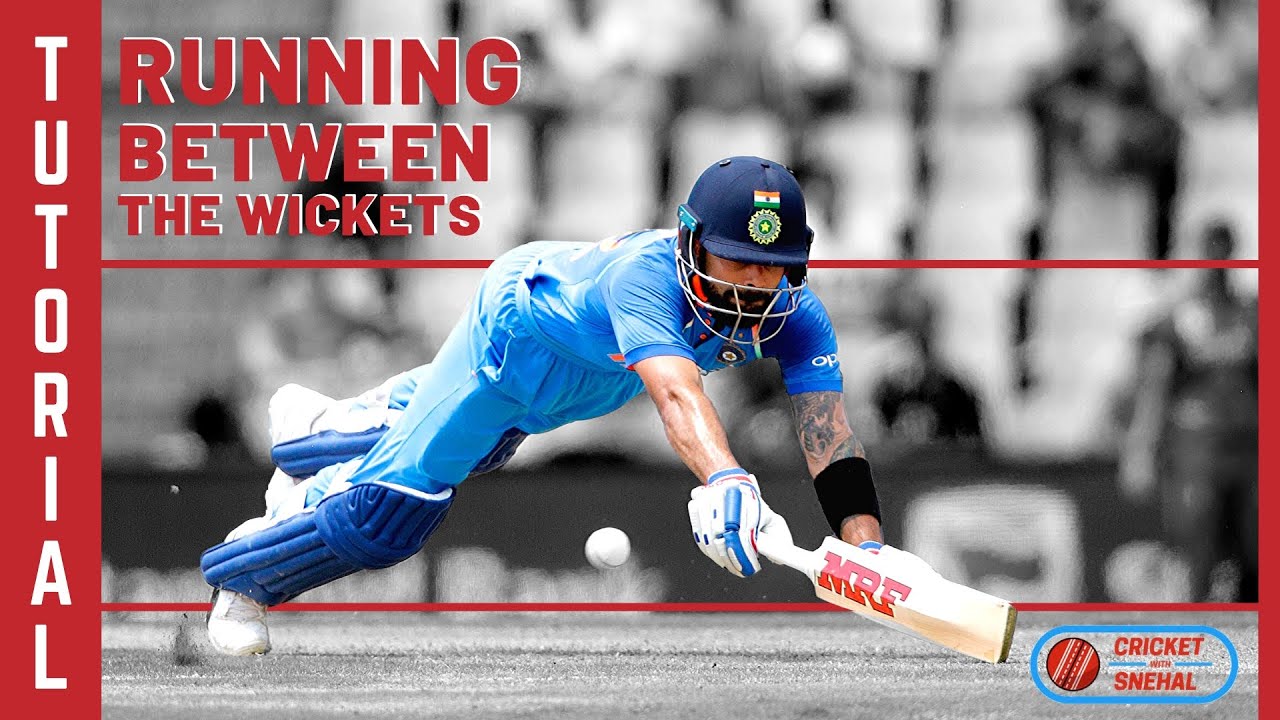
Running between the wickets involves not only speed but also intelligence and communication. It’s about making split-second decisions, knowing when to push for an extra run, and ensuring your partner is on the same page. To excel in this aspect of cricket, players must master several key skills:
- Judging Quick Singles: Assess the fielder’s position, the speed of the ball, and your own running ability to decide whether to attempt a quick single.
- Taking Advantage of Overthrows: Exploit fielding errors by being alert and ready to capitalize on overthrows.
- Backing Up: Always position yourself correctly as the non-striker to provide a safe option for your partner and reduce the risk of run-outs.
- Fitness and Speed: Enhance your fitness and speed through regular training to cover the ground quickly and complete runs efficiently.
Running between the wickets is a skill that can be honed through practice and experience. In the next sections, we’ll explore each of these aspects in detail and provide actionable tips to help you become a more proficient runner on the cricket field.
Key Aspects of Effective Running Between the Wickets
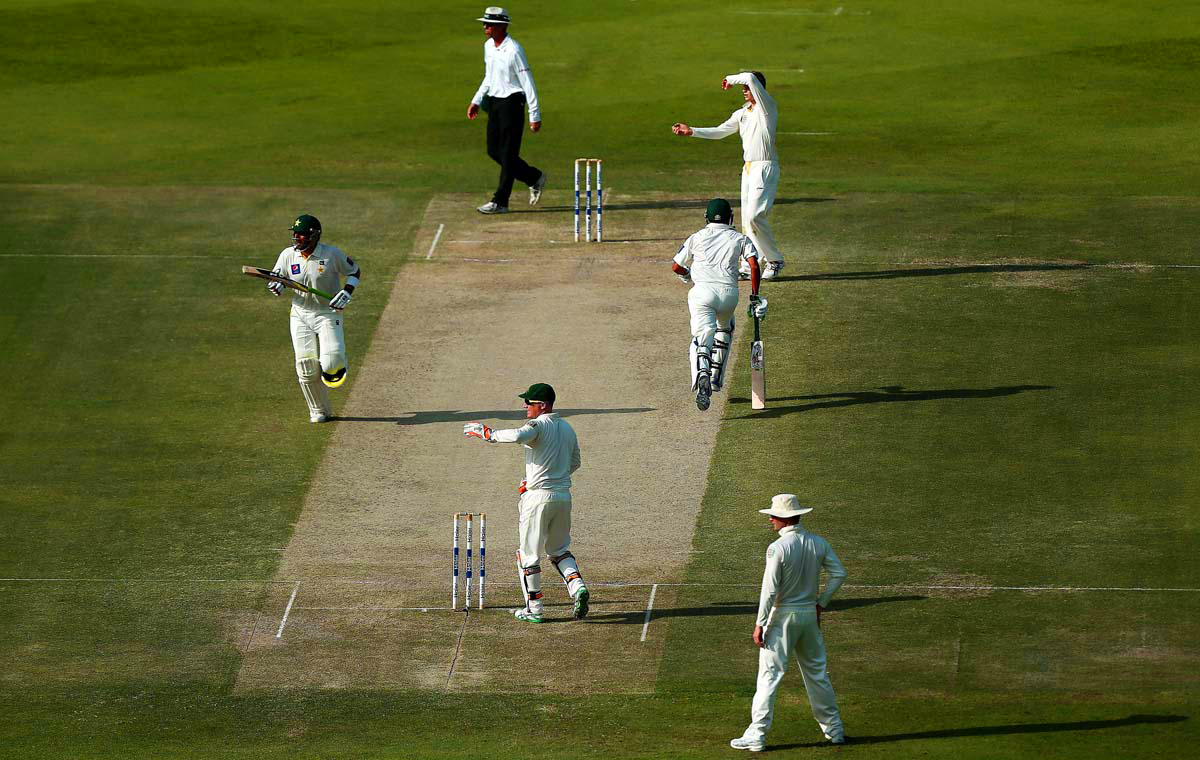
Effective running between the wickets is a combination of skills, strategy, and teamwork. To become a proficient runner on the cricket field, you need to focus on several key aspects:
1. Communication and Understanding
Communication between the batsmen is paramount. Clear and concise calls, such as “yes,” “no,” or “wait,” help in avoiding confusion and potential run-out situations. Use hand signals if necessary, especially in loud or crowded conditions.
Understanding your partner’s strengths and weaknesses is equally vital. Be aware of their running ability, fitness level, and cricketing instincts. This knowledge will help you make quick decisions on whether to push for runs or stay put.
2. Judging Quick Singles
The ability to judge whether a quick single is possible can make or break a partnership. To excel at this, consider the following factors:
- Fielder’s Position: Keep an eye on the fielder’s position. If they are far from the ball or recovering, it may be an opportunity for a quick single.
- Bowling Speed: Faster bowlers may give you less time to react, so be prepared to move quickly.
- Your Running Speed: Know your own running speed and fitness level. This self-awareness is crucial for assessing your ability to complete a quick single.
- Backing Up: Ensure the non-striker is backing up properly to facilitate quick singles and reduce the risk of run-outs.
3. Taking Advantage of Overthrows
Overthrows occur when a fielder’s throw misses the stumps and goes beyond the intended target. Be vigilant and ready to capitalize on these mistakes. Always look to convert potential overthrows into extra runs. A quick reaction and smart running can turn overthrows into valuable runs for your team.
4. Backing Up and Avoiding Run-Outs
Backing up is a critical aspect of running between the wickets. The non-striker should stand a few steps out of the crease, ready to sprint if the striker calls for a run. Proper backing up not only speeds up singles but also minimizes the risk of run-outs.
Avoiding run-outs requires discipline and awareness. Always ground your bat inside the crease when running. Be aware of where the fielders are and where the ball is. A moment of hesitation can lead to a run-out, so decisiveness is key.
5. Fitness and Speed Training
Cricket is a physically demanding sport, and running between the wickets requires both speed and endurance. Incorporate fitness and speed training into your routine. This can include sprint drills, agility exercises, and cardiovascular conditioning. Improved fitness will not only help you run faster but also recover quickly between runs, allowing you to take advantage of more scoring opportunities.
Running Between the Wickets: A Team Effort
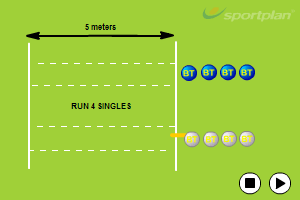
Remember that running between the wickets is a collaborative effort. Both batsmen must be in sync, communicating effectively, and making quick decisions. By mastering these key aspects, you can contribute significantly to your team’s success and become a more valuable asset on the cricket field.
1. Communication and Understanding
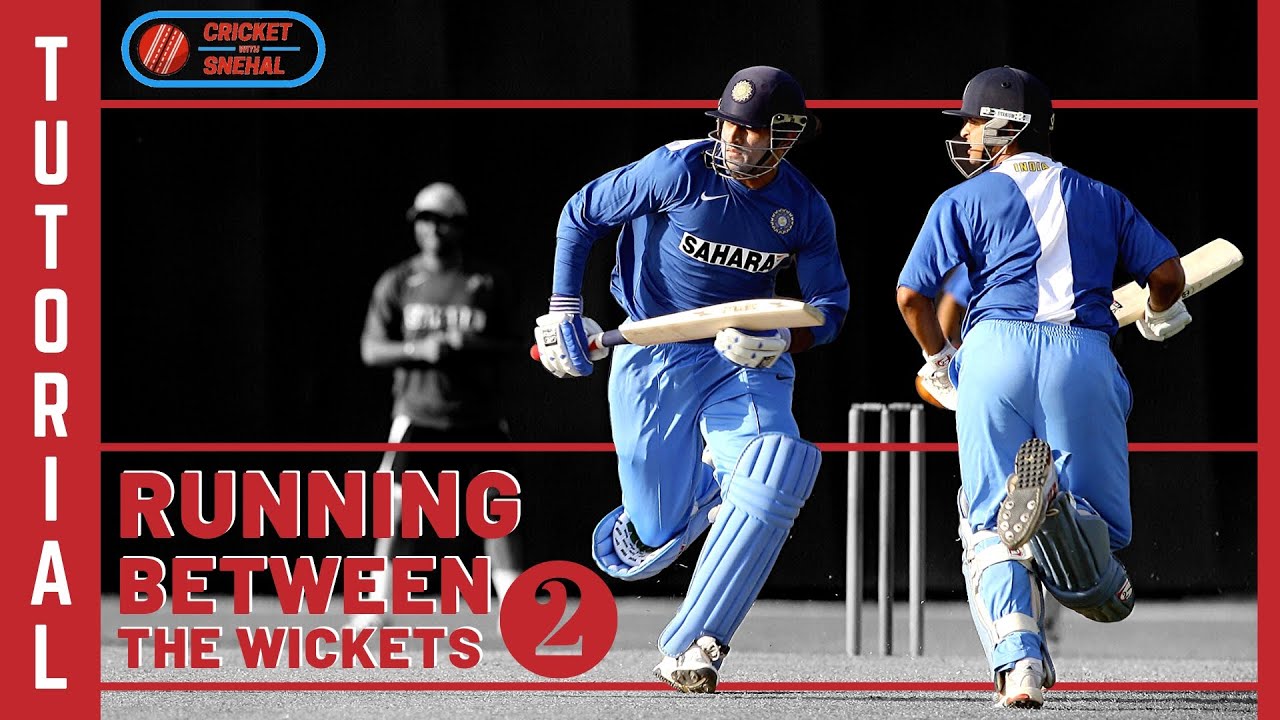
Effective communication and a deep understanding between the batsmen are the foundation of successful running between the wickets in cricket. This aspect is often underrated but can make a remarkable difference in the outcome of a match. Here, we delve into the critical components of communication and understanding in cricket:
Clear and Timely Communication:
Verbal cues: Batsmen must employ simple and clear verbal cues to communicate their intentions. Calls such as “yes,” “no,” “wait,” and “quick” are commonly used to convey whether a run should be attempted or not. Ensure that your calls are loud enough to be heard over the ambient noise of the field.
Hand signals: In noisy or crowded conditions, hand signals can serve as an effective supplement to verbal communication. Batsmen can use signals like raising a hand to signal a quick run or tapping the bat on the ground to indicate waiting.
Understanding Your Partner:
Running ability: Each batsman should have a clear understanding of their partner’s running ability. Some players are naturally faster runners than others, and this knowledge is vital in deciding when to push for runs. If one player is significantly faster, they may take more responsibility for quick singles.
Fitness level: Assess your partner’s fitness level. A fit partner is more likely to complete runs quickly and recover for the next run. Batsmen should be aware of each other’s conditioning to judge their capacity for running between the wickets.
Cricketing instincts: Understanding your partner’s cricketing instincts is equally important. Some players are more aggressive and eager to take risks, while others may be more conservative. Adapt your communication and running decisions accordingly to harness each player’s strengths.
Decision-Making Under Pressure:
Cricket often puts batsmen in high-pressure situations, especially when facing tight bowling or a fielding side that excels in preventing runs. In such situations, the ability to make quick, accurate decisions is paramount:
- Rapid assessment: Batsmen must rapidly assess the fielder’s position, the speed of the ball, and the angle of the throw. This information helps in deciding whether a run is safe to attempt.
- Backing up: The non-striker should always be prepared to run and positioned correctly. This backing up ensures that the striker can trust their partner to respond quickly to a call for a run.
- Adaptability: Effective communication extends to adapting to the changing situation. If a call for a run is initially made but needs to be revoked due to a fielder’s quick response, the ability to halt mid-run is crucial to avoid run-outs.
Ultimately, communication and understanding form the bedrock of running between the wickets. By mastering these aspects, cricket batsmen can enhance their efficiency, minimize the risk of run-outs, and consistently accumulate runs, contributing significantly to their team’s success.
2. Judging Quick Singles
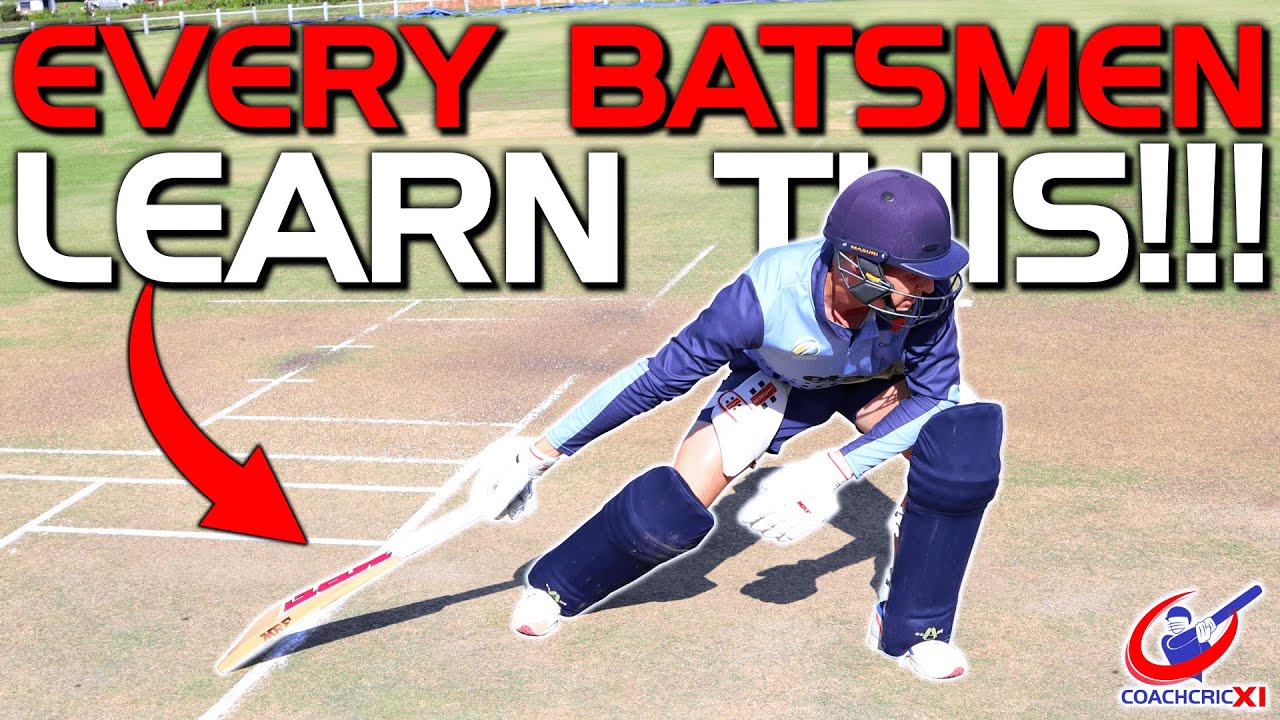
Judging whether to attempt a quick single in cricket is a skill that demands split-second decision-making, keen awareness of the game’s dynamics, and an understanding of various factors that influence the outcome. The ability to judge quick singles effectively can turn a good partnership into a great one and apply pressure on the fielding side. Here’s a comprehensive look at how to master this aspect of running between the wickets:
Factors to Consider When Judging Quick Singles:
1. Fielder’s Position: Keep a constant eye on the fielder nearest to the ball. If they are stationed deep or slow to react, it may present an opportunity for a quick single. Conversely, if the fielder is close and has a strong throwing arm, caution is advised.
2. Bowling Speed: The pace of the bowler plays a pivotal role. Faster bowlers offer less time to react and sprint between the wickets. Adjust your judgment accordingly based on the bowler’s speed.
3. Your Running Speed: Self-awareness is essential. Know your own running speed and agility. Recognizing your limits helps in deciding whether you can complete a quick single without hesitation.
4. Backing Up: Proper backing up by the non-striker is crucial. Being in a position to respond promptly can make the difference between a safe run and a run-out.
Key Tips for Judging Quick Singles:
1. Call Early: The striker should call early and clearly if they intend to take a run. A late call can lead to confusion and hesitation.
2. Trust Your Partner: Trust your partner’s judgment. If they call for a run, be prepared to respond quickly unless you have a strong reason to stay put.
3. Eye on the Ball: Keep your eye on the ball at all times. This helps in reacting swiftly to a fielder’s actions or changes in the ball’s trajectory.
4. Stay Low: When starting a run, stay low to the ground. A lower center of gravity improves acceleration and makes it harder for the fielder to aim accurately at the stumps.
Decision-Making Process:
Here’s a simplified decision-making process when considering a quick single:
| Factor | Action |
|---|---|
| Fielder’s Position | If the fielder is deep or slow to react, consider taking a run. |
| Bowling Speed | Adjust your judgment based on the bowler’s pace. |
| Your Running Speed | Know your limits; if confident, start running promptly. |
| Backing Up | Ensure your partner is backing up properly. |
Remember, mastering the art of judging quick singles requires practice and experience. Over time, you’ll develop an instinct for when to take the risk and when to play it safe. The ability to judge quick singles can significantly boost your batting performance and overall contributions to your team.
3. Taking Advantage of Overthrows
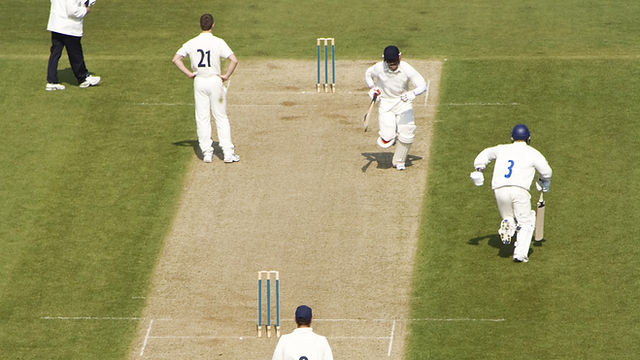
Cricket is a game of opportunities, and one such opportunity that can have a significant impact on the outcome of a match is taking advantage of overthrows. Overthrows occur when a fielder’s throw misses its target, allowing batsmen to earn extra runs. Here’s a closer look at how to capitalize on overthrows effectively:
Understanding Overthrows:
Overthrows happen due to various reasons, including fielding errors, inaccurate throws, or a miscommunication between fielders. It’s crucial to be vigilant and ready to exploit these moments when they occur.
Keys to Taking Advantage of Overthrows:
1. Quick Decision-Making: When you notice an overthrow, make a rapid decision about whether to attempt an extra run. Decisiveness is essential, as hesitation can lead to missed opportunities.
2. Communication: Call loudly to alert your partner about the possibility of an extra run. Ensure both batsmen are on the same page before attempting the run.
3. Backing Up: Proper backing up by the non-striker is vital. They should be positioned correctly and ready to respond swiftly if a run is attempted.
Example Scenario:
Imagine a scenario where the batsmen have completed a quick single, and the fielder throws the ball wildly to the wicketkeeper. The ball travels past the wicketkeeper towards the boundary. Here’s how to capitalize on this:
| Step | Action |
|---|---|
| 1 | Recognition: Quickly recognize the fielder’s error and the direction in which the ball is heading. |
| 2 | Call: Loudly call for an extra run to your partner while keeping an eye on the ball. |
| 3 | Response: Ensure that your partner acknowledges the call and is ready to run. |
| 4 | Exploit: Take advantage of the situation by completing the extra run as quickly as possible. |
Caution:
While overthrows can provide scoring opportunities, it’s important to be cautious. Not every overthrow should be exploited. Consider the distance between the fielder and the boundary, the fielder’s throwing accuracy, and the risk of being run out. A reckless attempt at an extra run can lead to unnecessary dismissals.
Overall, taking advantage of overthrows requires alertness, communication, and quick decision-making. When executed wisely, it can add valuable runs to your team’s total and put pressure on the fielding side.
4. Backing Up and Avoiding Run-Outs
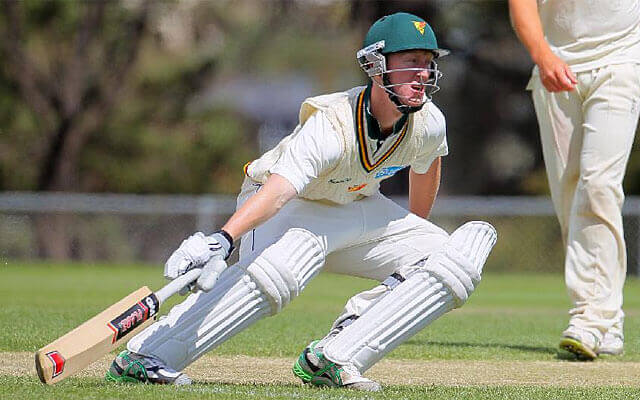
Backing up and avoiding run-outs are critical aspects of running between the wickets in cricket. Efficient backing up ensures that batsmen can complete runs safely, while avoiding run-outs preserves partnerships and maintains scoreboard pressure. Here’s a detailed guide on how to excel in these crucial areas:
1. Backing Up:
Backing up refers to the position and readiness of the non-striker (the batsman not currently facing the bowler) to respond to the striker’s call for a run. Proper backing up is essential to facilitate quick singles and minimize the risk of run-outs. Here’s what you need to know:
- Positioning: The non-striker should stand a few steps out of the crease and on the side closest to the striker. This positioning allows for a quicker start when a run is called.
- Alertness: The non-striker must remain alert and focused, ready to react instantly when the striker calls for a run.
- Quick Response: When a run is called, the non-striker should push off quickly and sprint towards the opposite crease.
- Grounding the Bat: Always ensure the bat is grounded inside the crease when running. This precaution can save you from run-out dismissals.
2. Avoiding Run-Outs:
Run-outs can be game-changing moments in cricket. To avoid run-outs and ensure that both batsmen stay at the crease, consider the following:
- Clear Communication: Effective communication between the batsmen is vital. Ensure that you both call loudly and clearly to avoid misunderstandings.
- Decision-Making: Make quick and accurate decisions when calling for runs. If there is any doubt, it’s safer to stay put than to risk a run-out.
- Running in Straight Lines: Run in the straightest line possible between the wickets. Zig-zag running can lead to unnecessary collisions and run-outs.
- Slide: When diving or sliding to make your ground, extend your bat and hand while keeping them grounded. This minimizes the risk of being stumped or run out if your body is beyond the crease.
Example Scenario:
Imagine a situation where a batsman hits the ball into the infield and calls for a quick single:
| Step | Action |
|---|---|
| 1 | Call for Run: The striker calls for a run, and the non-striker responds immediately by pushing off and sprinting. |
| 2 | Clear Communication: Both batsmen maintain loud and clear communication throughout the run. |
| 3 | Slide: The striker slides the bat and hand into the crease while ensuring they are grounded, avoiding a run-out dismissal. |
By adhering to proper backing up and avoiding run-out strategies, batsmen can stay safe, keep partnerships intact, and contribute significantly to their team’s success. Remember that practice and awareness are key to mastering these essential skills.
5. Fitness and Speed Training
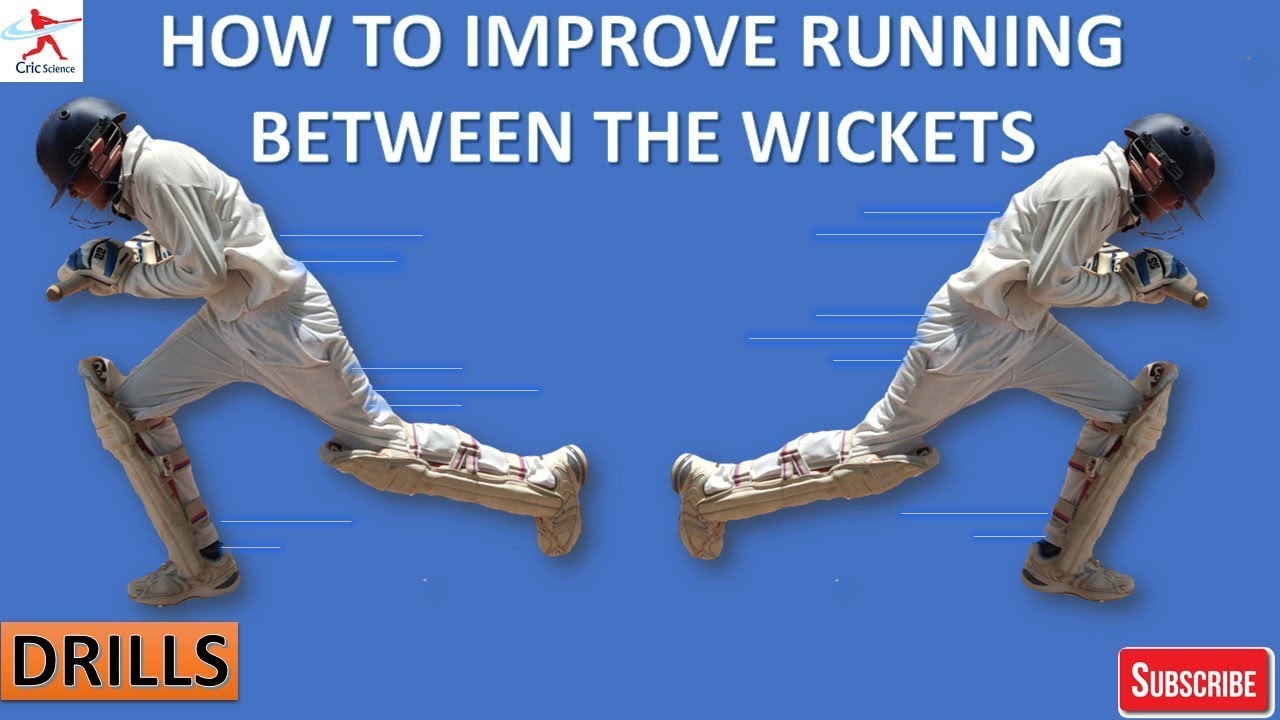
Cricket, like many sports, demands a high level of fitness and speed, and running between the wickets is no exception. To excel in this aspect of the game, players must prioritize fitness and undergo specific training regimens aimed at improving their speed, endurance, and agility. Here’s a comprehensive guide to fitness and speed training for cricket:
1. Sprint Training:
Sprinting is a fundamental skill for running between the wickets. It involves explosive bursts of speed over short distances. Incorporate sprint training into your routine with the following exercises:
- Interval Sprints: Alternate between short sprints and brief periods of rest. This simulates the stop-and-start nature of running between the wickets.
- Hill Sprints: Running uphill increases resistance and enhances leg strength and speed.
2. Agility Drills:
Agility is crucial for quick changes of direction, a skill often required in cricket to respond to the ball’s movement or fielding positions. Include agility drills such as ladder drills, cone drills, and shuttle runs in your training plan.
3. Cardiovascular Conditioning:
Cricket matches can be physically demanding, requiring endurance to stay alert and maintain speed throughout the game. Engage in cardio exercises like running, cycling, or swimming to build endurance and stamina.
4. Strength Training:
Building strength in your legs and core is essential for powerful running. Include exercises like squats, lunges, and leg presses in your strength training routine. Strengthening your core helps maintain balance and stability during sprints.
5. Flexibility and Mobility:
Being flexible and mobile allows you to move more efficiently and reduce the risk of injuries. Incorporate stretching exercises and yoga into your training regimen to improve flexibility and joint mobility.
6. Reaction Time:
Improving your reaction time is vital for quick decision-making while running between the wickets. Practice drills that enhance your reflexes, such as catching or dodging objects thrown at you.
7. Rest and Recovery:
Don’t underestimate the importance of rest and recovery in your training plan. Overtraining can lead to injuries and burnout. Ensure you get adequate sleep and allow your muscles time to recover between intense workouts.
8. Nutrition:
Proper nutrition is the foundation of any training program. Consume a balanced diet rich in carbohydrates, proteins, and essential vitamins and minerals. Stay hydrated to maintain peak performance.
9. Consistency:
Consistency is key to improvement. Stick to your training schedule and gradually increase the intensity as your fitness level improves. Monitor your progress and make necessary adjustments.
By incorporating these fitness and speed training principles into your cricket regimen, you’ll enhance your running between the wickets, making you a more valuable asset to your team. Remember that dedicated training and a commitment to continuous improvement are essential to achieving your cricketing goals.
Frequently Asked Questions (FAQ)

1. What is the role of the non-striker in running between the wickets?
The non-striker, also known as the batsman at the non-striker’s end, plays a crucial role in running between the wickets. Their responsibilities include:
- Being ready to respond quickly when the striker calls for a run.
- Standing a few steps out of the crease and on the side closest to the striker to shorten the distance when running.
- Backing up the striker to facilitate quick singles and reduce the risk of run-outs.
- Grounding the bat inside the crease to avoid being run out.
2. How can I improve my sprinting speed for quick singles?
Improving sprinting speed requires focused training and practice. Here are some tips to enhance your sprinting speed for quick singles:
- Sprint Drills: Include interval sprints and hill sprints in your training routine to build speed and power.
- Strength Training: Strengthen your leg muscles with exercises like squats and lunges to generate more force while sprinting.
- Agility Work: Incorporate agility drills to improve your ability to change direction quickly.
- Proper Running Form: Work on your running technique, including arm movement, stride length, and posture.
- Warm-Up and Cool Down: Always warm up before sprinting and cool down to prevent injuries.
3. What are some common mistakes to avoid when running between the wickets?
Several common mistakes can lead to run-outs or inefficient running between the wickets. To avoid these errors, keep the following in mind:
- Hesitation: Hesitating when making a run call or responding to a call can lead to run-outs. Be decisive.
- Failure to Ground the Bat: Ensure you ground the bat inside the crease when running to avoid run-out dismissals.
- Running in a Straight Line: Avoid zig-zag running; it wastes time and can lead to collisions or run-outs.
- Not Calling Loudly: Clear and loud calls are essential to avoid confusion with your partner.
- Overestimating Your Speed: Be realistic about your running ability and judge quick singles accordingly.
By understanding these common mistakes and practicing good running habits, you can minimize errors and contribute positively to your team’s running between the wickets.
1. What is the role of the non-striker in running between the wickets?
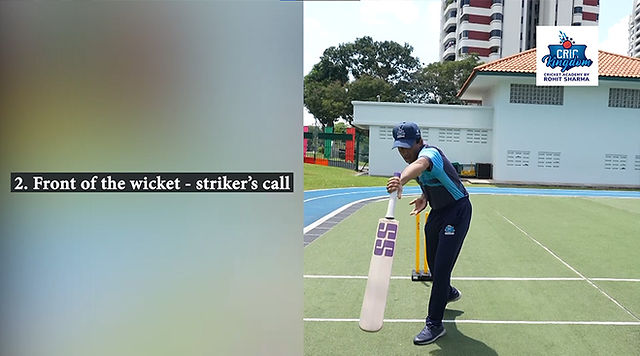
The role of the non-striker in running between the wickets is often underestimated, but it is crucial to the success of the batting partnership in cricket. Here, we’ll delve into the responsibilities and significance of the non-striker in the context of running between the wickets:
Position and Readiness:
The non-striker, also known as the batsman at the non-striker’s end, stands at the opposite end of the striker (the batsman facing the bowler) when the bowler is about to deliver the ball. Their position should be a few steps out of the crease and on the side closest to the striker. This positioning serves several purposes:
- Shorter Running Distance: Being closer to the striker shortens the distance the non-striker needs to cover when attempting a run. This can be the difference between a safe run and a run-out.
- Quick Response: The non-striker must be ready to respond swiftly when the striker calls for a run. This readiness is essential to capitalize on quick singles and twos.
- Reducing Fielding Opportunities: By standing outside the crease, the non-striker reduces the chances of the fielding side having a direct hit at the stumps, which could result in a run-out.
Backing Up the Striker:
One of the primary responsibilities of the non-striker is to provide crucial support to the striker. This support includes:
- Facilitating Quick Singles: The non-striker should be in a position to respond promptly when the striker calls for a single. By doing so, they ensure that runs are scored quickly and efficiently.
- Reducing Run-Out Risks: Proper backing up by the non-striker minimizes the chances of run-outs. If the striker’s shot goes to a fielder, the non-striker should be prepared to sprint if a run is attempted.
Grounding the Bat:
When attempting a run, both batsmen must ensure that they ground their bats inside the crease. Grounding the bat means that some part of it should be in contact with the crease line or within the crease when the bails are removed. This simple act can prevent run-out dismissals.
In summary, the non-striker’s role in running between the wickets involves positioning, readiness, and support for the striker. Their ability to respond quickly, facilitate runs, and avoid run-outs contributes significantly to the partnership’s success and the overall performance of the batting side in cricket.
2. How can I improve my sprinting speed for quick singles?

Improving your sprinting speed is essential for successfully completing quick singles in cricket. Speed is a valuable asset that can make the difference between a safe run and a run-out. Here are some key strategies to enhance your sprinting speed:
1. Sprint Drills:
Sprint drills are an integral part of speed training. They help improve your explosiveness and acceleration. Incorporate the following sprint drills into your training routine:
- Interval Sprints: Alternate between short, intense sprints and brief periods of rest. This mimics the stop-and-start nature of running between the wickets.
- Hill Sprints: Running uphill adds resistance and builds leg strength, which can boost your sprinting speed.
- Resistance Sprints: Use resistance bands or parachutes while sprinting to increase resistance and strengthen your muscles for quicker bursts of speed.
2. Strength Training:
Building lower body strength is crucial for powerful running. Focus on exercises that target your leg muscles, such as squats, lunges, and leg presses. A strong lower body can generate more force during each stride, leading to faster sprinting speed.
3. Proper Running Form:
Efficient running form can significantly impact your speed. Pay attention to the following aspects of running form:
- Arm Movement: Pump your arms in sync with your strides. This action can help propel you forward and maintain balance.
- Stride Length: Work on increasing your stride length by stretching your legs fully during each step.
- Posture: Maintain an upright posture with a slight forward lean. Avoid hunching over, as it can slow you down.
- Breathing: Focus on rhythmic breathing to ensure efficient oxygen flow to your muscles.
4. Agility and Reflex Training:
Enhancing your agility and reflexes can aid in quick direction changes, which are often required during running between the wickets. Incorporate agility drills, ladder drills, and cone exercises into your training routine to improve your agility and responsiveness.
5. Warm-Up and Cool Down:
Always begin your sprint training sessions with a thorough warm-up to prepare your muscles and joints for high-intensity activity. After sprinting, engage in a proper cool-down routine, including stretching, to prevent injuries and aid recovery.
6. Consistency:
Improving sprinting speed requires consistent effort and practice. Incorporate speed training into your regular fitness regimen and gradually increase the intensity as your speed improves. Monitor your progress to track your development.
7. Nutrition and Hydration:
Eat a balanced diet that provides the energy and nutrients needed for speed training. Stay hydrated to prevent muscle cramps and maintain peak performance during sprint workouts.
By following these strategies and dedicating time to speed training, you can significantly enhance your sprinting speed for quick singles in cricket. Remember that consistent effort and proper technique are key to achieving noticeable improvements.
3. What are some common mistakes to avoid when running between the wickets?
When running between the wickets in cricket, several common mistakes can lead to run-outs or inefficient running. Being aware of these errors is essential for improving your running between the wickets and minimizing dismissals. Here are some common mistakes to avoid:
- Hesitation: Hesitating when making a run call or responding to a call from your partner can lead to confusion and delays. It’s crucial to be decisive when deciding to run.
- Failure to Ground the Bat: To avoid run-out dismissals, both batsmen must ensure they ground their bats inside the crease when completing a run. Failing to do so can result in unnecessary run-outs.
- Running in a Zig-Zag Pattern: Running in a zig-zag or meandering manner wastes time and energy. It can also increase the risk of collisions between the batsmen. Run in a straight line to maximize efficiency.
- Not Calling Loudly: Clear and loud communication is crucial between the batsmen. Calling loudly and clearly ensures that both partners are aware of each other’s intentions. Soft or unclear calls can lead to misunderstandings and run-out opportunities for the fielding side.
- Overestimating Your Speed: It’s important to be realistic about your running ability. Overestimating your speed can result in attempting runs that are too risky, leading to run-outs. Assess your speed and judge quick singles accordingly.
- Ignoring Field Placement: Neglecting to take into account the fielder’s position can lead to run-out dismissals. Always be aware of where the fielders are and whether they have a direct line of sight to the stumps.
By avoiding these common mistakes and practicing good running habits, you can significantly improve your running between the wickets in cricket. Effective communication, quick decision-making, and sound running techniques are essential for success in this aspect of the game.
Conclusion
In conclusion, running between the wickets is a vital aspect of cricket that can have a profound impact on a team’s performance and success. It requires a combination of skills, including speed, agility, communication, and decision-making. By following the guidelines and strategies outlined in this blog post, you can improve your running between the wickets and contribute positively to your team’s batting performance:
- Communication: Effective communication between the batsmen is key to avoiding misunderstandings and maximizing scoring opportunities.
- Judging Quick Singles: Developing the ability to judge when to attempt quick singles based on fielder positions, bowling speed, and your own running speed is crucial.
- Taking Advantage of Overthrows: Being alert and ready to exploit overthrows can result in valuable extra runs.
- Backing Up and Avoiding Run-Outs: Proper backing up and run-out avoidance strategies are essential for preserving partnerships and maintaining scoreboard pressure.
- Fitness and Speed Training: Dedication to fitness and speed training can significantly enhance your running capabilities on the cricket field.
Remember that running between the wickets is not just about speed but also about smart decision-making and teamwork. It requires practice and experience to become proficient, so continue to work on your skills and apply the knowledge gained from this blog post. With consistent effort and a commitment to improvement, you can become a more effective and valuable batsman in the game of cricket.
